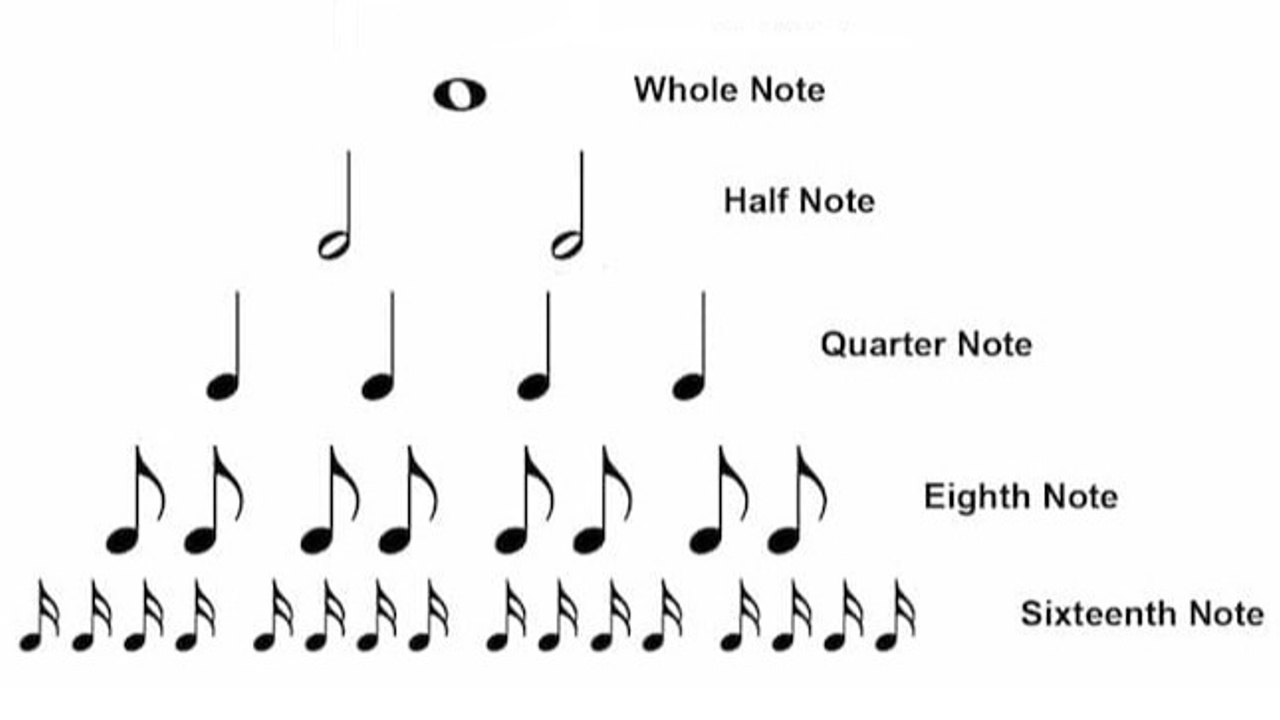So you’ve mastered the art of shredding on the guitar like a rock god, but when it comes to keeping rhythm, you’re about as coordinated as a cat on a hot tin roof. Fear not, my fellow music enthusiast, for we have the ultimate guide to help you conquer the wild beast that is guitar rhythm. From strumming patterns to syncopation, we’ll have you tapping your foot and grooving along in no time. So grab your guitar, grab your metronome, and get ready to unleash your inner rhythm master – because we’re about to rock your world (in a totally non-threatening, musical way, of course).
Contents
- 1 Understanding the Basics of Rhythm Guitar
- 2 Exploring Time Signatures and Their Impact on Rhythm
- 3 The Role of Strumming Patterns in Defining Song Dynamics
- 4 Incorporating Percussive Techniques for Enhanced Rhythm Playing
- 5
- 6 Developing Speed and Accuracy Through Metronome Practice
- 7 Transitioning Between Rhythms Seamlessly for Advanced Playing
- 8 FAQs
- 9 Now go forth and strum like a pro!
Understanding the Basics of Rhythm Guitar
So you’ve decided to pick up the guitar and dive into the world of rhythm playing. Congratulations! This is where the real magic happens. But before you start strumming away like a rockstar, it’s important to understand the basics of rhythm guitar. Let’s break it down for you:
First things first, rhythm guitar is all about keeping time and providing the backbone for the music. You’re the unsung hero who makes the band sound tight and cohesive. Think of yourself as the glue that holds everything together.
When it comes to playing rhythm guitar, chords are your best friends. Practice switching between different chords smoothly and quickly. Remember, it’s not about how many chords you know, but how well you can play the ones you do know.
Don’t forget about rhythmic patterns! Experiment with strumming techniques like downstrokes, upstrokes, and palm muting to add flavor to your playing. Mix it up and keep it interesting – after all, variety is the spice of life (and music).

Exploring Time Signatures and Their Impact on Rhythm
Have you ever found yourself tapping your foot to a catchy tune and suddenly feeling like you’ve been transported to a jazz club? Well, that sensation is all thanks to the fascinating world of time signatures and their impact on rhythm!
In music, time signatures are like the secret code that dictates the rhythm of a piece. They tell musicians how to space out notes in order to create a sense of groove and flow. From the steady, toe-tapping beat of 4/4 to the frenetic energy of 7/8, each time signature brings its own unique flavor to the musical table.
Imagine a song in 3/4 time signature swirling around you like a waltz, making you feel like you’re gracefully gliding across a ballroom dance floor. Then, in the blink of an eye, the same song shifts to 5/4 time signature, throwing you off balance and leaving you spinning like a confused top.
So, the next time you find yourself bopping your head to a catchy tune, take a moment to appreciate the hidden magic of time signatures that’s creating that infectious rhythm. It’s like a musical puzzle that tickles your brain and moves your feet in ways you never thought possible!

The Role of Strumming Patterns in Defining Song Dynamics
So, you think strumming patterns in a song don’t matter? Think again! Those upstrokes and downstrokes can make or break the dynamics of a song. Let’s break it down, shall we?
First off, the speed of your strumming pattern can dictate the energy level of a song. A fast, aggressive strum can pump up the crowd at a concert, while a slow, gentle strum can create a dreamy, intimate atmosphere. It’s like controlling the volume knob of your emotions with just your guitar!
Next, the complexity of your strumming pattern can add layers of depth to a song. Mixing up simple downstrokes with intricate fingerpicking can keep the listener engaged and make your song stand out from the rest. It’s like adding extra spices to your favorite dish – it just elevates the whole experience!
And let’s not forget about the suspense factor. A sudden change in strumming pattern can catch the audience off guard, adding drama and tension to the music. It’s like a plot twist in a movie – you never saw it coming, but boy, does it make the whole thing more interesting!

Incorporating Percussive Techniques for Enhanced Rhythm Playing
When it comes to rhythm playing, incorporating percussive techniques can take your skills to the next level. Not only will you impress your bandmates and audience, but you’ll also have a blast experimenting with new sounds and rhythms. Here are some tips to get you started:
- Experiment with different types of percussion instruments, such as drums, tambourines, or even pots and pans. The more variety, the better!
- Don’t be afraid to get your hands dirty – literally. Slapping the guitar body, tapping the strings, or even stomping your feet can all add interesting percussive elements to your playing.
- Get creative with your rhythm patterns. Try incorporating syncopation, polyrhythms, or odd time signatures to spice things up.
Remember, the key to incorporating percussive techniques is to have fun and think outside the box. Don’t be afraid to make mistakes – that’s all part of the learning process. So grab your guitar, get those fingers moving, and start rockin’ those rhythms like never before!

mastering-muting-and-palm-muting-for-rhythmic-precision”>Mastering Muting and Palm-Muting for Rhythmic Precision
So you think you’ve got rhythm, huh? Well, I hate to break it to you, but your playing could probably use a little tuning up when it comes to muting and palm-muting. Luckily for you, I’m here to guide you through the chaotic world of strings and frets with the finesse of a ninja in a quiet library.
First things first, mastering muting is all about keeping those unwanted noises at bay. Picture yourself swatting away pesky mosquitoes on a hot summer night – that’s the kind of precision you need. Make sure your fingers are lightly touching the strings you don’t want to sound, while allowing the notes you do want to come through loud and clear. It’s a delicate dance, but practice makes perfect!
Now, let’s talk palm-muting. This technique is like the secret weapon in your arsenal of rhythmic mastery. Use the fleshy part of your picking hand to lightly touch the strings near the bridge, giving your notes a percussive and muted sound. Experiment with the placement of your palm to find that sweet spot where your guitar sings like a well-tuned symphony orchestra.
Remember, Rome wasn’t built in a day, and neither will your muting and palm-muting skills. So grab your guitar, crank up the volume, and get ready to unleash a tidal wave of rhythmic precision that will make even the most seasoned pros bow in awe.
Developing Speed and Accuracy Through Metronome Practice
Are you tired of feeling like a slowpoke when it comes to playing music? Well, fear not! With the power of a metronome, you can develop lightning-fast speed and precision like never before.
Imagine being able to play complex passages with the speed and accuracy of a ninja slicing through the air. That’s the kind of magic a metronome can work on your musical abilities. Just set that little ticking timekeeper to the right tempo and watch your fingers fly across the fretboard or keys.
Not only will practicing with a metronome make you faster, but it will also make you more accurate. No more fumbling over tricky rhythms or missing notes – the metronome will keep you in line like a strict dance instructor at a ball.
So, don’t waste another second sluggishly plodding through your musical exercises. Grab that metronome, set it to a tempo that challenges you, and watch as your playing reaches new levels of speed and accuracy. Your musical prowess will thank you!
Transitioning Between Rhythms Seamlessly for Advanced Playing
So you think you’re a hot shot on the drums, huh? Well, transitioning between rhythms seamlessly is like mastering the art of juggling while riding a unicycle on a tightrope. It takes skill, finesse, and a little touch of magic. But fear not, my fellow drum wizards, for I am here to bestow upon you some wisdom to help you conquer this rhythmic challenge.
First things first, you gotta have a solid foundation. This means mastering the basics like your paradiddles, flams, and ghost notes. Once you’ve got those down pat, you can start to experiment with different rhythms and see how they interact with each other. It’s like conducting a symphony orchestra, but instead of a baton, you’ve got a pair of drumsticks.
Next, it’s all about timing. Just like a comedian delivering a punchline, the key to transitioning between rhythms seamlessly is all in the timing. Practice counting out loud while you play to really get a feel for the rhythmic changes. And remember, patience is key. Rome wasn’t built in a day, and neither was Ginger Baker’s drum kit.
Finally, don’t be afraid to mix things up. Try incorporating odd time signatures or experimenting with different tempos. The beauty of drumming is that there are no rules, only guidelines. So go forth, my rhythmic warriors, and conquer the drum kit with boldness and style!
FAQs
Q: How can I improve my sense of timing when playing guitar?
A: Ah, timing, the eternal struggle of every musician. To sharpen your sense of rhythm, try practicing with a metronome or playing along with your favorite songs. Don’t be afraid to tap your foot or nod your head either - just make sure you’re not headbanging too hard!
Q: What are some common mistakes to avoid when playing guitar rhythm?
A: Oh, where do I begin? One common mistake is playing too fast and sacrificing accuracy. Remember, it’s better to play slow and steady than to rush through with sloppy playing. Also, be sure to mute any strings you’re not playing to avoid a cacophony of unwanted noise - unless you’re going for that avant-garde experimental rock vibe.
Q: How can I incorporate different strumming patterns into my playing?
A: Strumming patterns are like spices in a music stew - they add flavor and variety. Experiment with different patterns like down-up-down-up or down-down-up-up to spice up your playing. Don’t be afraid to get creative and mix it up – just like a musical mad scientist.
Q: What are some exercises I can do to improve my guitar rhythm skills?
A: Ah, the dreaded “e” word – exercises. Fear not, young grasshopper. Practice scales with a focus on rhythmic precision, strumming along to a metronome at different tempos, or even tapping out rhythms on your guitar body. The key is consistency, so don’t give up – Rome wasn’t built in a day, and neither is a masterful guitar player.
Q: How can I make my guitar rhythm sound more dynamic and interesting?
A: Dynamics, the spice of life - and music. To add depth and interest to your playing, experiment with playing softer and louder, using accents to emphasize certain notes, or incorporating pauses for dramatic effect. Remember, music is a conversation – so be sure to throw in some spicy guitar licks to keep things interesting.
Now go forth and strum like a pro!
Congratulations, you’ve made it to the end of our comprehensive guide on mastering guitar rhythm. With all the tips and tricks we’ve provided, you’re well on your way to becoming a rhythm guitar god. So grab your guitar, practice those strumming patterns, and get ready to impress all your friends with your newfound skills. Remember, practice makes perfect - so don’t give up, keep strumming, and most importantly, have fun!



